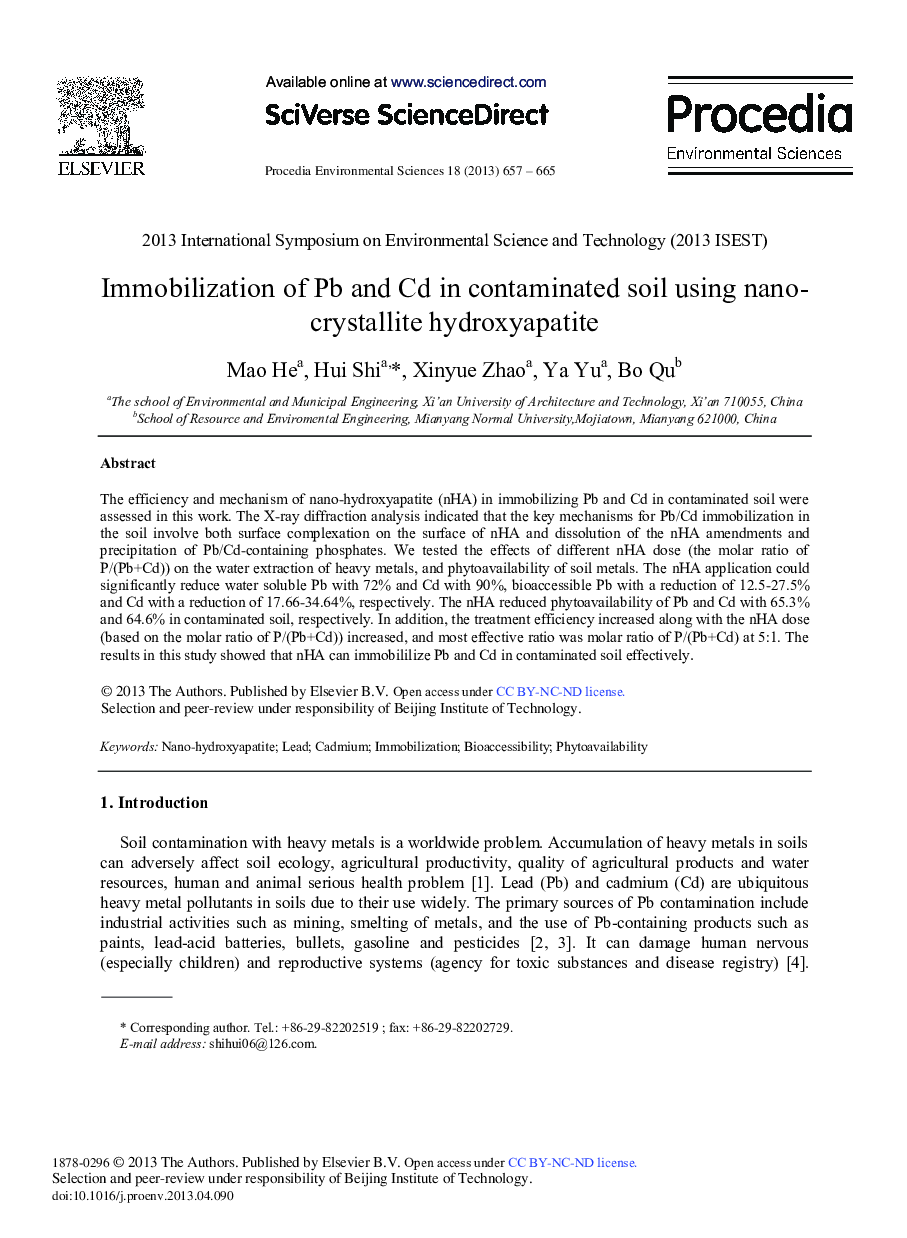| کد مقاله | کد نشریه | سال انتشار | مقاله انگلیسی | نسخه تمام متن |
|---|---|---|---|---|
| 4403022 | 1618626 | 2013 | 9 صفحه PDF | دانلود رایگان |

The efficiency and mechanism of nano-hydroxyapatite (nHA) in immobilizing Pb and Cd in contaminated soil were assessed in this work. The X-ray diffraction analysis indicated that the key mechanisms for Pb/Cd immobilization in the soil involve both surface complexation on the surface of nHA and dissolution of the nHA amendments and precipitation of Pb/Cd-containing phosphates. We tested the effects of different nHA dose (the molar ratio of P/(Pb+Cd)) on the water extraction of heavy metals, and phytoavailability of soil metals. The nHA application could significantly reduce water soluble Pb with 72% and Cd with 90%, bioaccessible Pb with a reduction of 12.5-27.5% and Cd with a reduction of 17.66-34.64%, respectively. The nHA reduced phytoavailability of Pb and Cd with 65.3% and 64.6% in contaminated soil, respectively. In addition, the treatment efficiency increased along with the nHA dose (based on the molar ratio of P/(Pb+Cd)) increased, and most effective ratio was molar ratio of P/(Pb+Cd) at 5:1. The results in this study showed that nHA can immobililize Pb and Cd in contaminated soil effectively.
Journal: Procedia Environmental Sciences - Volume 18, 2013, Pages 657-665